Susquehanna adventures, then and now
By Darian Jones, Communications & Outreach AmeriCorps Assistant for the Susquehanna Greenway Partnership
Originally published on the Susquehanna Greenway website here
The Susquehanna River—a landscape flowing with history and adventure!
At approximately 340 million years old, the Susquehanna River is older than the Nile, the Thames, and the Amazon rivers, spanning 672 miles across three states. It’s no wonder that over time, people in central Pennsylvania and beyond have returned to the river to celebrate its history and seek out adventures of their own. Whether rafting, rock-climbing, or even flying, there’s an adventure waiting for everyone on the Susquehanna Greenway. Let’s take a look at these adventures, then and now.
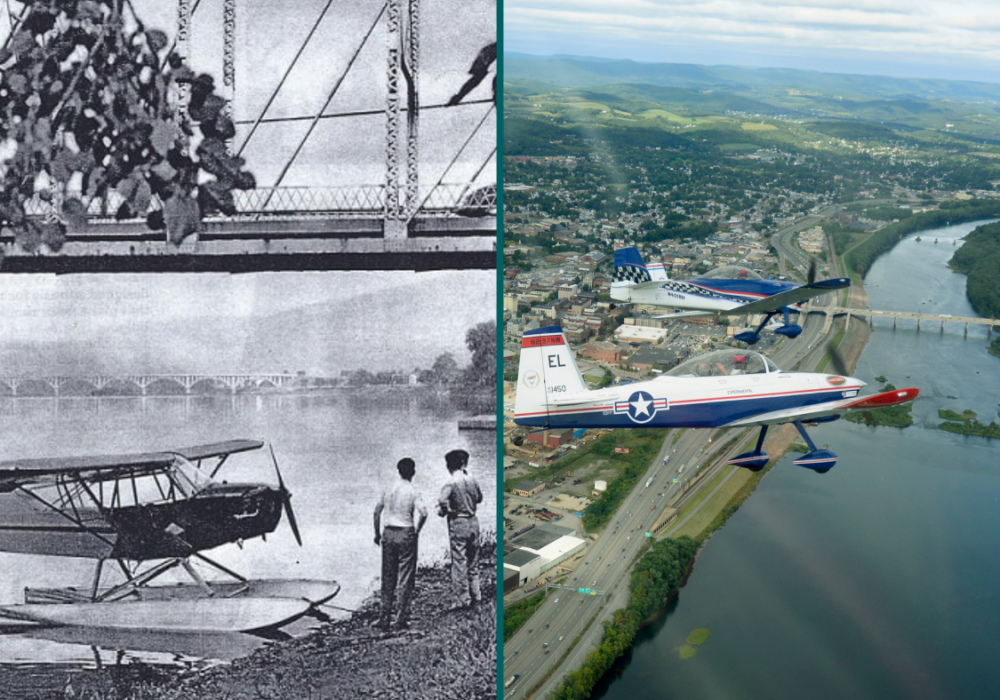
Rafting Adventures
The West Branch of the Susquehanna River crosses what is known as the Lumber Heritage Region. When early Pennsylvania settlers discovered Pennsylvania’s forests, they began to harvest the wood to sell in nearby ports. The lumber industry on the West Branch predated the first canals and railroads by several decades, so floating the logs downstream was the fastest way to transport the felled trees. Floating logs were often followed by settlers in flat-bottomed rafts called arks, and many of the logs were lashed into rafts to become navigable watercraft themselves. The crews would travel from smaller streams and then into the Susquehanna. In those days, traffic in and along the river was constant.
Years later, there have been many modern attempts to look back on this heritage and recreate the rafting adventure! From the ill-fated 1938 “Last Raft” which crashed along its journey in Muncy, PA to the more successful 2004 “Montour Log Raft” on the North Branch, it has become a pastime for honoring the lumber history of the region.
Image: Photo of a historical logging raft, courtesy of Lumber Heritage Region.
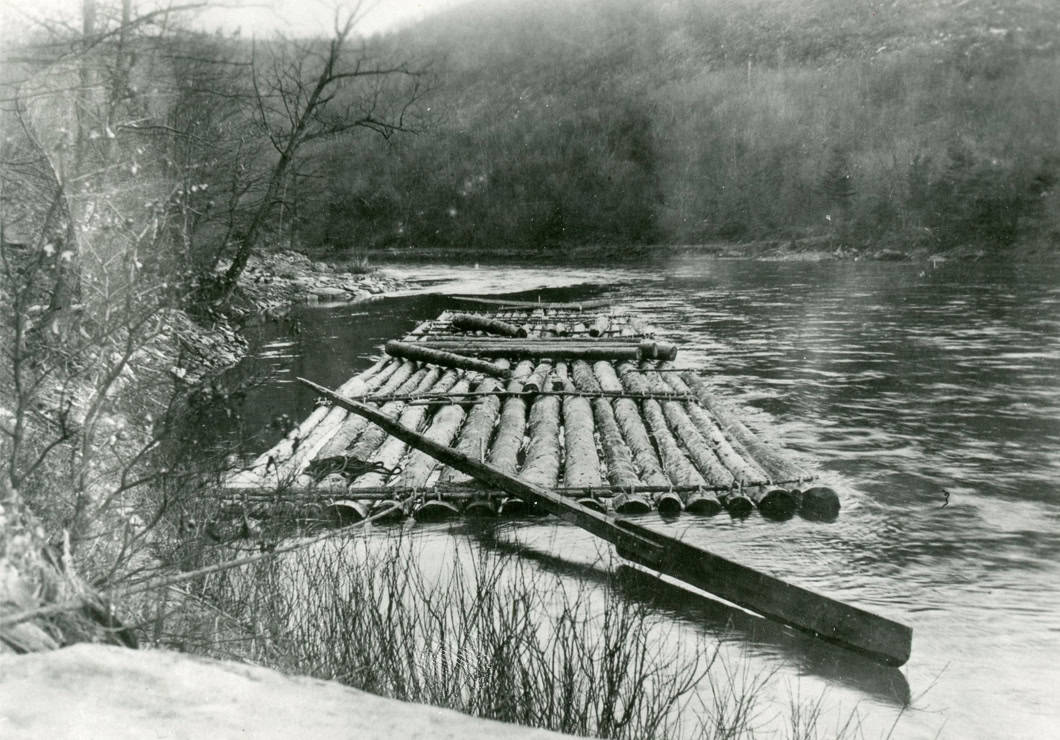
More recently in July 2023, a group of young adventurers set out from Falls, PA in a triple-decker raft guided by kayaks. A photo of the raft, by Julie Manwarren, took 3rd place in the 13th Annual Susquehanna Greenway Photo Contest as the raft floated by Pittston, PA. She remarks, “The boys reported that all along the river, people were waving at them, cheering them on.” This adventure has become an annual tradition for the group, which began in 2019 with a small platform on barrels and has since grown with each journey.
Image: Paddlers towing a raft in more modern times. Photo by Julie Manwarren.
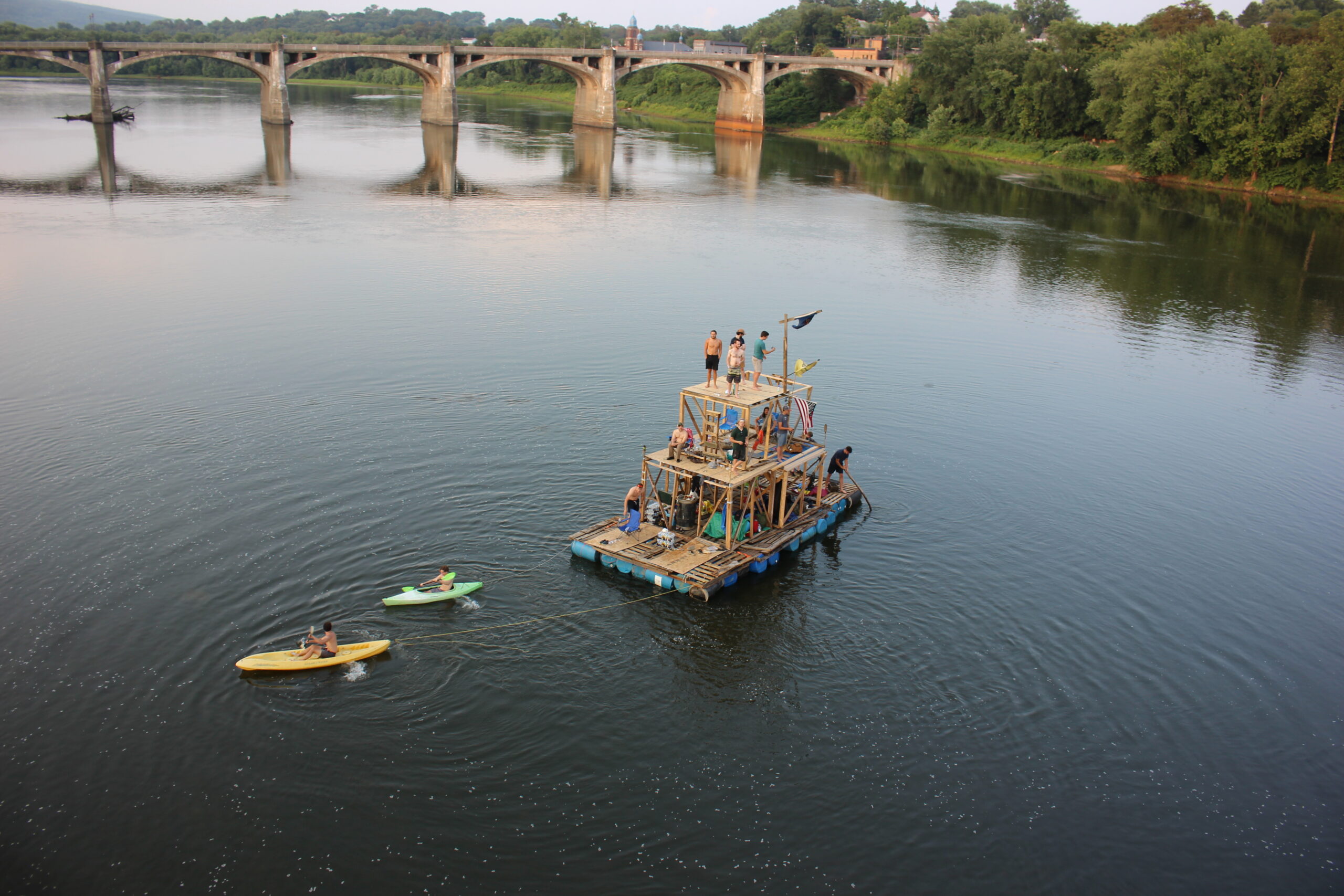
Airborne Adventures
Adventure on the Susquehanna Greenway takes flight! In fact, the region is deeply tied to the history of aviation as we know it. Since 1870, the Lycoming County Fair in Hughesville has annually celebrated the agricultural heritage of Pennsylvania. But in 1930, the addition of a 1700 ft airplane landing field at the fairgrounds introduced aviation as both a modern tradition and an economic benefit.
The Hughesville Airport was an important refueling stop for air traffic between New York and Ohio. Hughesville Airport was eventually removed after WWII. But in modern times, the Fairground Association paid homage to air adventure by hosting the Balloonfest and Air Show event for 18 years, featuring hot air balloons and flight demonstrations.
Image: Historical photo of a Piper plane on the Susquehanna River, courtesy of the Piper Aviation Museum.

Further, the designated Susquehanna Greenway River Town of Lock Haven, in Clinton County, is home to the Piper Aviation Museum. The museum is housed in the former production facility for Piper Aircraft. When W.T. Piper Sr. established the Piper Aircraft Corporation in 1937, his vision was to make planes that opened opportunities for the average person to learn to fly.
It was here that the Piper J-3 Cub was developed. In its tenure, the J-3 became the most popular civilian aircraft by 1941, simultaneously enjoying its place as the standard by which WWII pilots were trained. Piper Aircraft continued to establish itself as one of the “big 3” companies alongside Cessna and Beechcraft. Piper stopped manufacturing planes in Pennsylvania in 1984, but Lock Haven is now home to the William T. Piper Memorial Airport, an active facility adjacent to other aviation businesses that promote access to adventure in the region.
Image: Planes flying above Lock Haven and the West Branch Susquehanna River. Photo by Mark Nance.
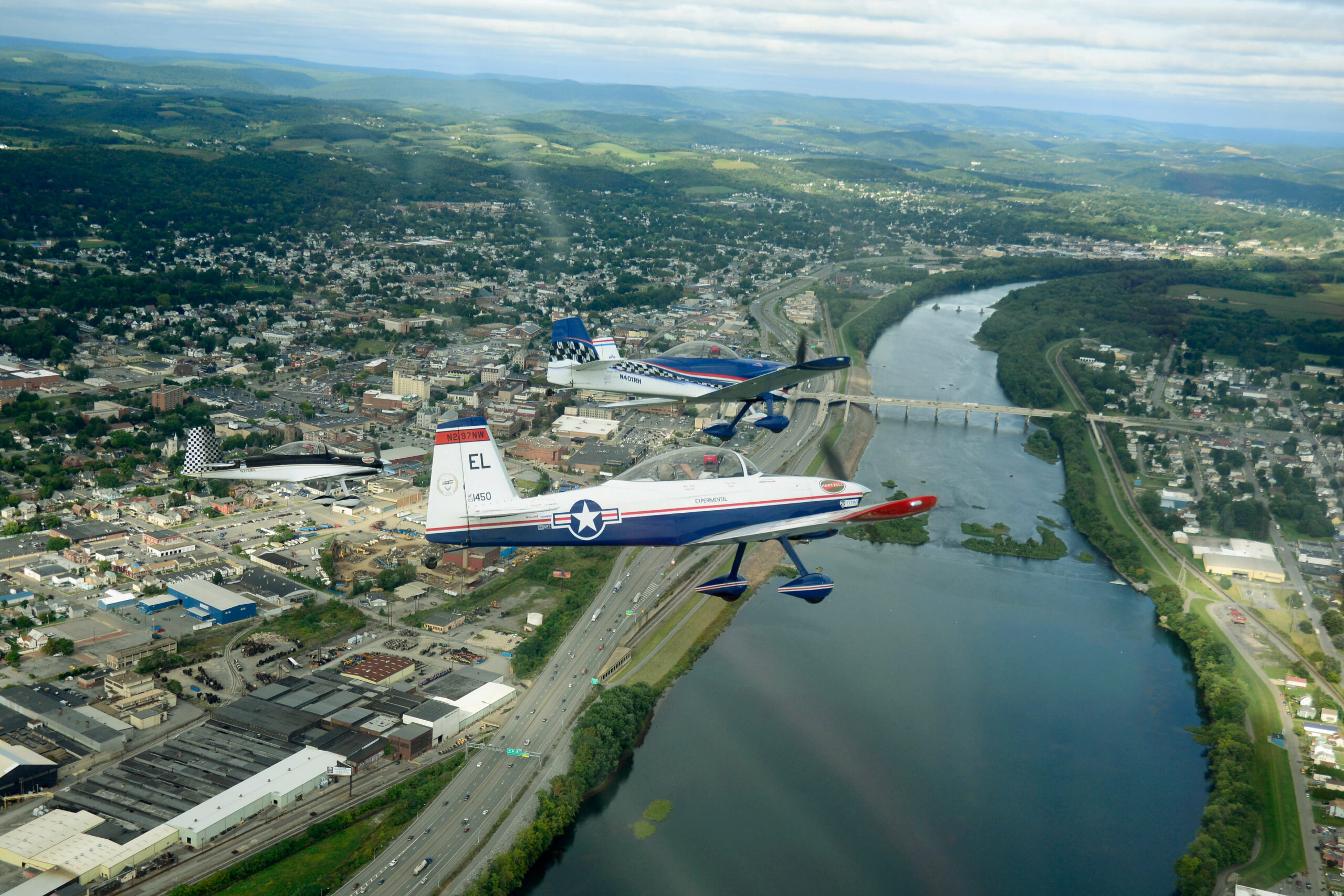
Aeronautical adventures in the region are not limited to planes, either! Many adventurers seek out the landscape as a backdrop for sky diving, paragliding, hang gliding, and more! Hyner View State Park, in particular, is known for its scenic vistas, and has attracted paragliders and hang gliders from all over the country. Since 1975, Hyner Hang Gliding Club has organized foot-launched flying and provided flying lessons to the public.
Image: A hang glider at Hyner View. Photo by Terry Wild.

Paddling Adventures
The Susquehanna River also holds the distinction of being a designated Pennsylvania Water Trail, meaning it has a marked recreational route for paddling, fishing, and boating opportunities. This Susquehanna River Water Trail contains access points, boat launches, day use sites, and/or overnight camping sites for the boating public. It even has a series of maps that guide users along the amenities of the trail, and several organizations who serve as managers or stewards of the trail.
Yet, the river has been both practical and recreational for a long time. As long as there have been people living along the banks of the Susquehanna, the river has been used for trade and transportation. Early indigenous nations of the region navigated the Susquehanna River using dugout canoes, a simple but sturdy vessel made by either scraping or burning the inside of a felled tree and shaping it for use on the water. Many 16th century English settlers adopted dugouts in addition to their wood plank boats.
Image: Historical photo of canoe transport, courtesy of the PA Trails of History program.
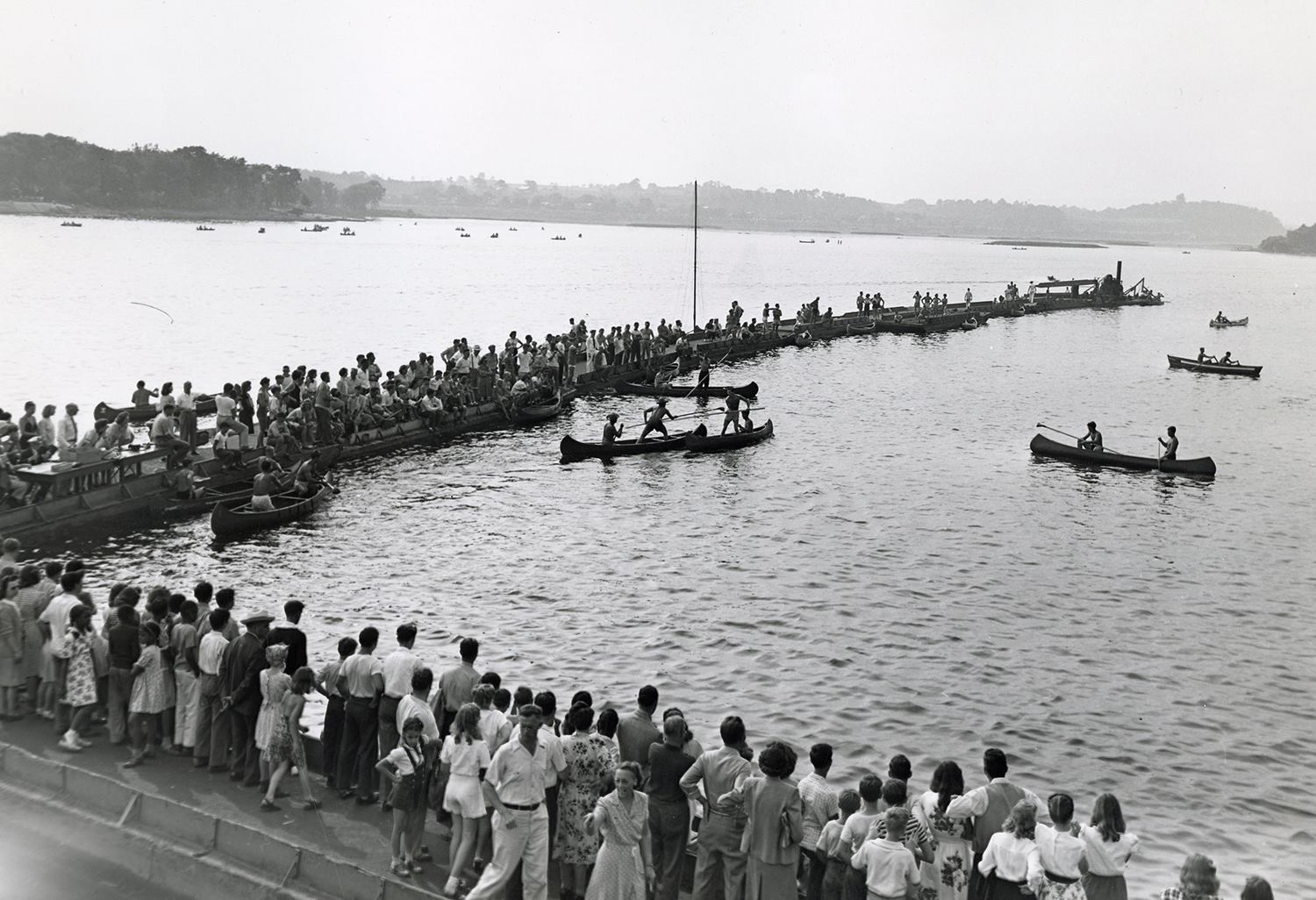
Through the 17th and 18th centuries, the Susquehanna River was a major throughway for transporting raw and manufactured goods, sparking expansion by means of canal building and acting as a catalyst for communities of river towns to thrive. Central Pennsylvania would not exist as it does today without the Susquehanna River, and the public is still actively engaged in traversing the water trail.
As one of the Susquehanna River Water Trail managers, the Susquehanna Greenway Partnership is dedicated to connecting people to the information, resources, and planning tools needed for exploring the river. They provide resources like maps, brochures, and guides to help people connect with the outdoor opportunities of our region and they organize kayaking events to help beginners and experienced users alike navigate the river with a guide. When you sit down to plan your next river adventure, look no further than susquehannagreenway.org/water-trails.
Image: A photo of a Susquehanna Greenway river sojourn.
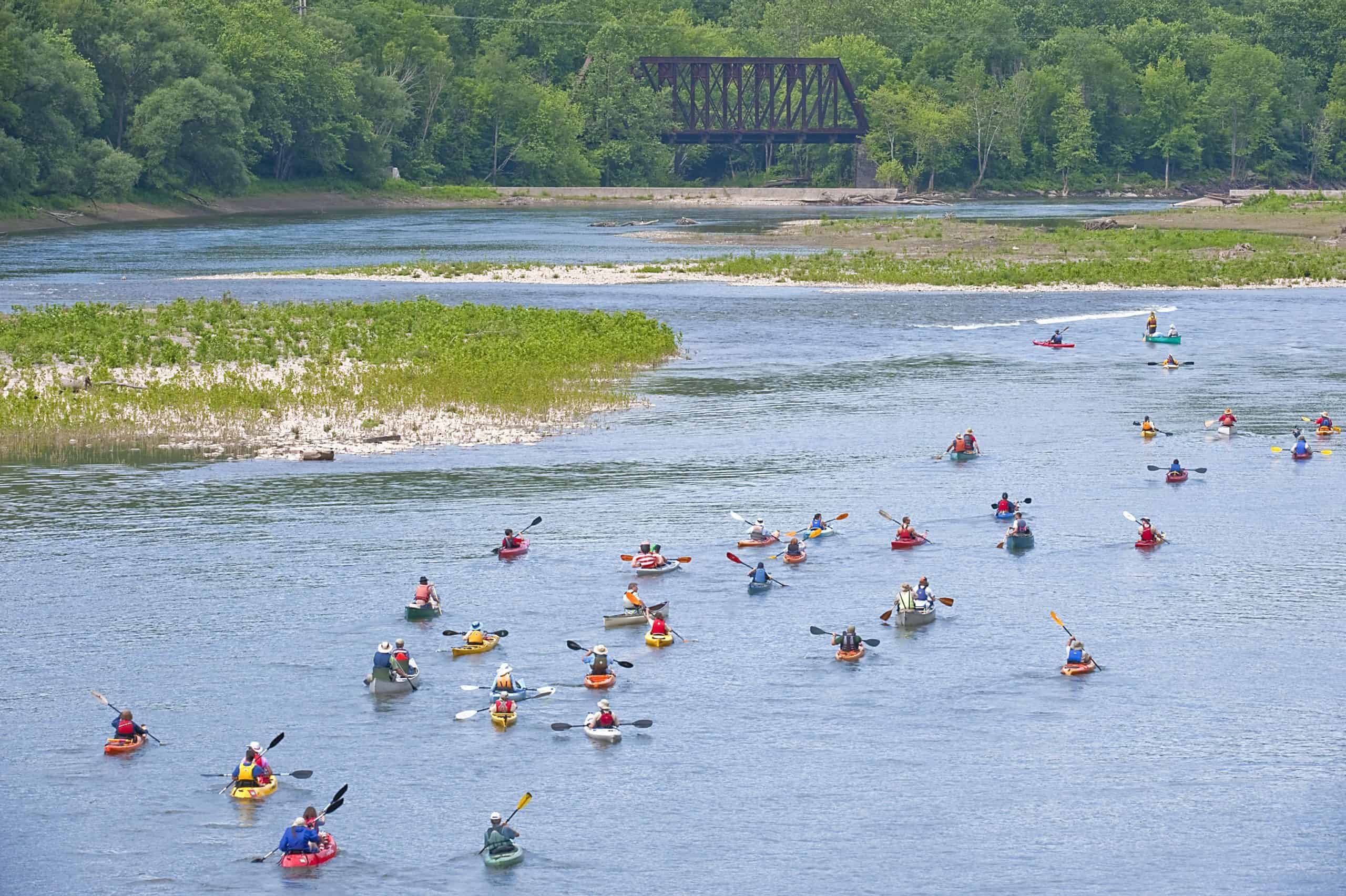
From “Then” to “Now”
The Susquehanna Greenway landscape is a corridor of connected trails, parks, river access points, and communities, linking people to the natural and cultural treasures of the Susquehanna River within Pennsylvania. When you look at Susquehanna adventures, then and now, it is amazing to see how use of the river has evolved. The adventures of today were made in part by the events of yesterday, forging a series of connections that represent what it means to live in the Susquehanna Greenway. What’s your next adventure?
About the Author:
Darian Jones is the Communications & Outreach AmeriCorps Assistant for the Susquehanna Greenway Partnership. A recent graduate of Commonwealth University Bloomsburg, her work with SGP is focused on promoting trails and communities within our vibrant and connected Susquehanna Greenway, so that the public can enjoy opportunities to engage with the outdoors. Darian can be reached at djones@susquehannagreenway.org.
About The Susquehanna Greenway Partnership:
The Susquehanna Greenway is a corridor of connected trails, parks, river access points, and communities, linking people to the natural and cultural treasures of the Susquehanna River within Pennsylvania. The mission of the Susquehanna Greenway Partnership is to continue to grow the Greenway by building connections along the Susquehanna River, inspiring people to engage with the outdoors, and transforming communities into places where people want to live, work, and explore. Visit susquehannagreenway.org to learn more.



